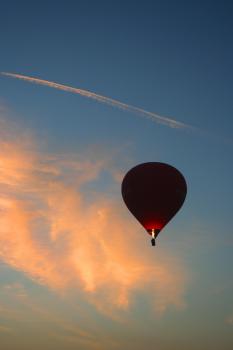The word Egypt conjures up in most minds evocative images of the pyramids of Giza but this country, which is the cradle of one of the oldest civilisations in the world has a lot more to offer to the intrepid traveller. A cruise down the Nile is one such experience. This is the simplest and most convenient way to see Upper Egypt (southern Egypt) home to many of the treasures of the age of the Pharaohs. There are many tour companies which arrange such cruises which include trips to the monuments on the banks of the river.
The cruise ship I travelled on, Cheops III was comfortable with spacious cabins, modern amenities and friendly and efficient staff. The wood panelled dining hall had an old-world charm that reminded me of Agatha Christie’s Death on the Nile. Thankfully nobody died on board. The large sundeck had a swimming pool and plenty of room for people to sit and watch the placid river and glimpses of rural life on the banks.
I boarded the cruise at Aswan. At Aswan before commencing our voyage I went to the Philae Temple. This temple was moved and re-assembled in order to prevent it from getting submerged by the Nile after the construction of the Aswan Dam, an engineering feat by all accounts. Now situated on the island of Aglika, this picturesque temple presents a striking picture against the deep vivid blue of the Nile. Dedicated to the goddess Isis (the protective goddess) it was built during the Ptolemaic period. The reliefs in the temple show Ptolemy XII in various traditional Egyptian poses with Egyptian gods and goddesses, reflecting the syncretic culture of the early Greeks in Egypt. There are also the remains of a temple dedicated to the goddess Hathor (also a protective goddess) nearby. The Trajan’s kiosk one of the most attractive monuments of the island with colonnades with beautifully carved lotus capitals.
If you have time in Aswan, a trip to the bustling and colourful local spice market would be due. Like in all markets in Egypt, even here you will be greeted with calls of ‘India- Amitabh Bacchan’, if the vendors spot that you are Indian. Of course this is just a prelude to the process of cajoling you into buying something from their shops. I never realised that Bollywood was such a draw in Egypt! I picked up some dry hibiscus petals which are used to make karkady, a very refreshing local beverage.
The visit to the market should ideally be followed by a cup of Turkish coffee (if you are a tea lover I would recommend the mint tea) savoured at one of the quaint roadside cafés that dot the streets. These roadside cafes are a ubiquitous feature of Egyptian streets, where at all times of the day and night one can see men (I use the word deliberately as I never saw a woman in one of these cafes) languorously sipping tea of coffee and smoking shisha.

 Hot air balloon, Luxor
Hot air balloon, Luxor
We went to the temple of Queen Hashepsut next. Hatshepsut was a co-regent along with Tuthmose III who was a minor when his father died. She was a prolific temple builder and commissioned the construction of many temples during her reign. This beautifully proportioned temple with three colonnaded levels was built into a mountain. Reliefs show Hashepsut’s expedition to Punt (in modern Somalia). The statues of the queen show her with the ceremonial false beard worn by the male pharaohs.
Our next stop was the complex of temples of Karnak. Karnak is one of the largest and most awe-inspiring temple complexes in Egypt. Part of its charm is due to the fact that it incorporates myriad styles since different structures in the complex were constructed at different times ranging from 2040 B.C. to 1640 B.C. Although a lot of the complex is in ruins it is still an impressive sight. An avenue of ram-headed sphinxes lead to the first pylon. Outside the second pylon are two massive statues of Rameses II flanking the entrance. The hypostyle hall has an impressive number of colonnades with papyrus capitals rising up into the sky. The walls and colonnades are decorated with intricate reliefs.
The far side of the complex is the oldest part and is worth a look if you have time. Here I saw ruins of chambers and colonnades on which remnants of the original reliefs were still visible. The complex contains two obelisks built by Hashepsut and Tuthmose II. The best time to visit this temple is in the evening because it gives you an opportunity to see the statues and reliefs floodlit. The beautiful lighting from below sets off the temple architecture beautifully, bathing it in a warm orange glow.
The last Egyptian temple we saw was the Luxor temple. Like the Karnak Temple an avenue of sphinxes line a causeway leading to the temple. The entrance to the temple is guarded by two statues of Rameses II and an obelisk made of red granite. The courtyard inside is flanked by colonnades with papyrus capitals.
Sadly Luxor was my final stop in Egypt, marking the end of a memorable and delightful holiday. On the way to Luxor airport I took one last look at the pylons of the Luxor Temple, happy that my vacation turned out to be so magical but gloomy at the thought I would probably never visit this enchanted land again.